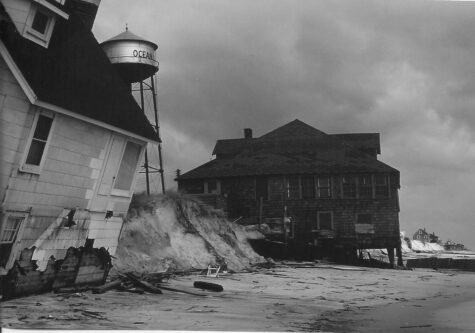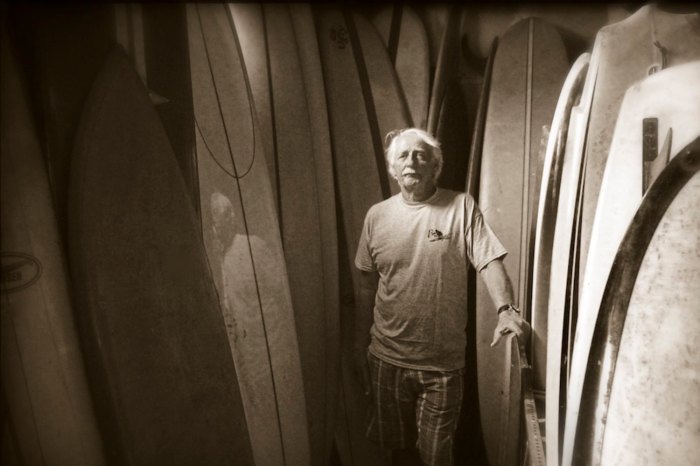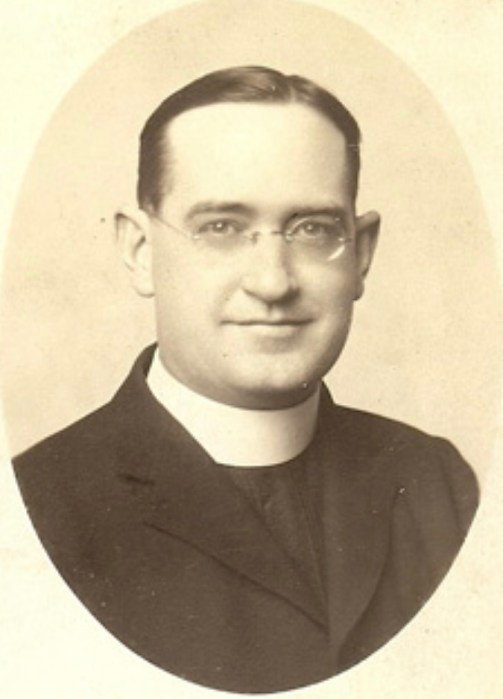
Collection and Courtesy of the Late Marcie Barbash.
By Christopher Verga
In the early morning hours of Ash Wednesday, March 7, 1962, the south shore was hit by a nor’easter. Unlike a hurricane, which strikes the coast with brute force but for a brief time, a nor’easter batters the beach for a more extended time. Sometimes lasting over 24 hours, a nor’easter can cause more damage than a hurricane.
When the Ash Wednesday storm finally passed, 99 homes were destroyed, but four other houses collapsed in the day that followed the passing of the storm. Long Island would have $10 million in damages, including $4.8 million in beach and dune, $3 million in private property, and an addition- al $2 million in damages throughout Nassau County.
But the greatest impact came with the “storm” developing throughout all the Fire Island communities and in the highest levels of New York State government. This storm stirred up in Fire Island left the destruction of New York’s power broker Robert Moses’s career in its path.
Unlike a nor’easter building up strength in the Atlantic weeks before making landfall, the storm’s eruption in Albany was decades in the making. Using the fear of the Ash Wednesday storm and reminding the public of the terrors of the Hurricane of 1938, Moses seized the opportunity to propose his long-delayed extension of Ocean Parkway, named Ocean Boulevard. Like the aftermath of the 1938 hurricane, multiple proposals were submitted to restore the shoreline and alleviate future damage. But in 1962 New York, Moses expanded his power throughout the state by holding 12 high level positions in New York. Before the 1962 nor’easter, Moses’s strongest opposition to his proposed Ocean Boulevard was Congressman Stuyvesant Wainwright, who ex- pressed interest in making Fire Island a National Park. Wainwright lost his bid for re-election to Otis Pike in 1960, which gave Moses an advantage for his grandiose plans.
The Commission on Protection and Preservation of Atlantic Shore Front was formed following the storm with Moses and his close ally, New York State Assemblyman Joseph Carlino.
York State Governor Nelson Rockefeller. Moses, the state official who redesigned New York City for the car and wielded more power than the governor, resigned from multiple positions including chairman of the State Park Council and president of the Long Island State Parks Commission. His planned four-lane road was dead, saving all Fire Island communities from the bulldozer. To further preserve the island, community members petitioned and supported Moses’s ally, Otis Pike, to sponsor the Fire Island National Seashore Bill, which would make the 33-mile island a national park.
On Sept. 11, 1964, Lyndon B. Johnson signed the Fire Island National Seashore Bill, preserving the island, effectively subsiding the storm of activism from a unified island.
The commission’s objective was to come up with a comprehensive plan to combat the frequent storms and hurricane damage. The commission concluded that an 18-foot-high four- lane road would cap the dune line and prevent shoreline erosion. The construction of this parkway would create up to four new state parks and come at the cost of $80,000,000. Like the 1938 plan, the four-lane road would level most of the towns and upend the distinctive natural features of the communities.
Quickly mobilizing against the plan, Ocean Beach’s Arthur Silsdorf, president of the Fire Island Voters Association (FIVA), discovered that Carlino co-owned a 16-acre tract of land on Fire Island. Silsdorf shared the discovery with Newsday, and Carlino, in an interview, stated he sold his share of the land once appointed to the commission, but his explanation left more questions. His share of the property was valued as high as $35,000, but he sold it for $13,000. As Carlino was being questioned for possible conflict of interest, Dunewood developer Maurice Barbash and his brother-in-law, Irving Like, mobilized all island residents and mainland South Shore community members against Moses’s road. In the months leading up to 1963, Moses started facing opposition from state officials who were giving in to the demands of Fire Island residents and South Shore mainlanders.































